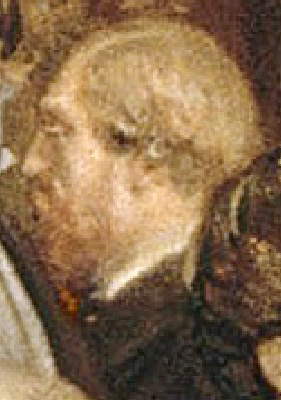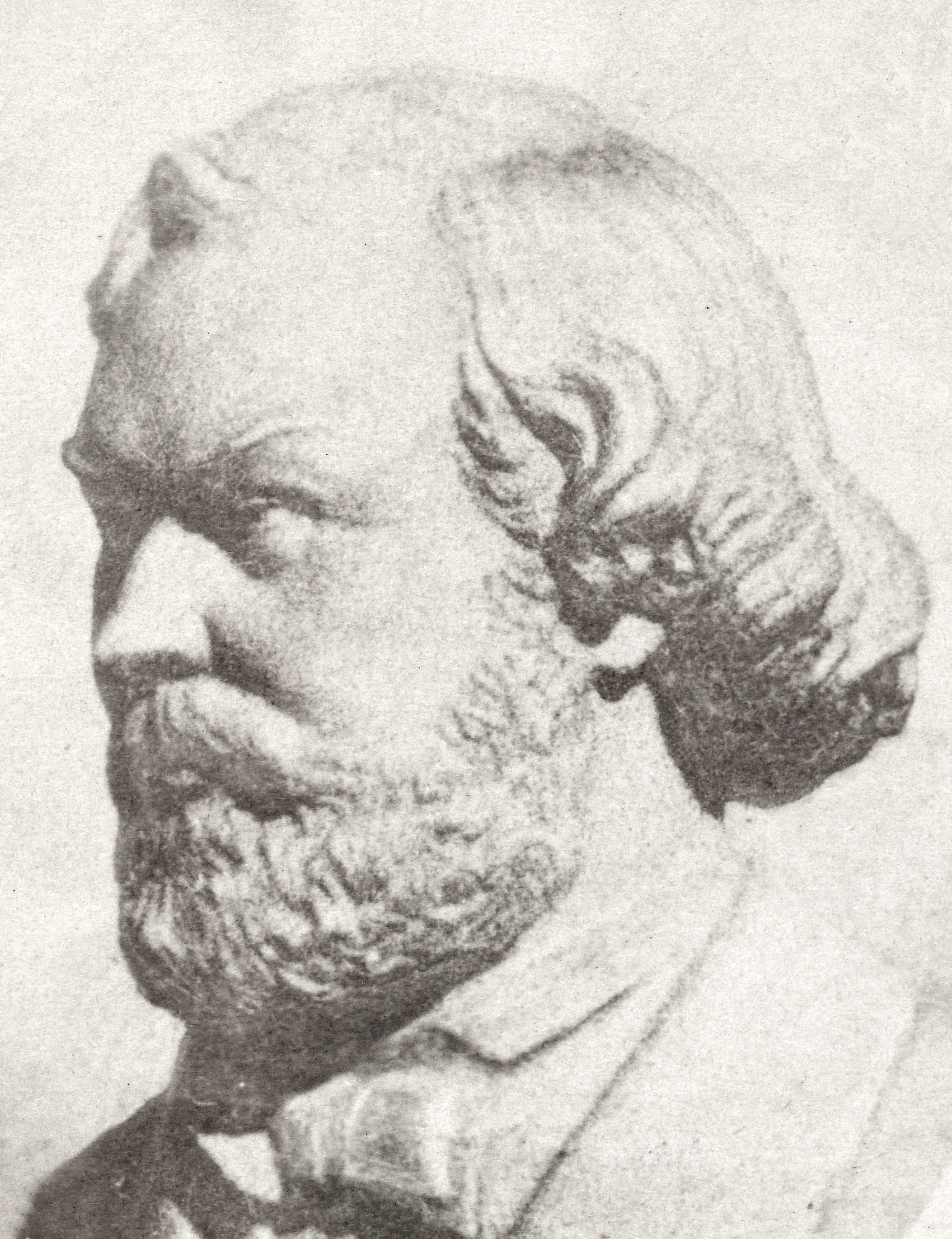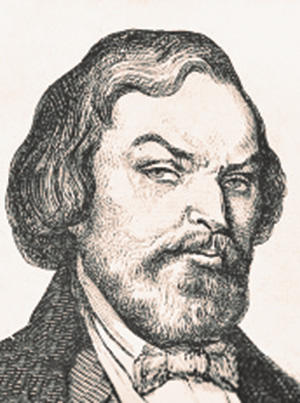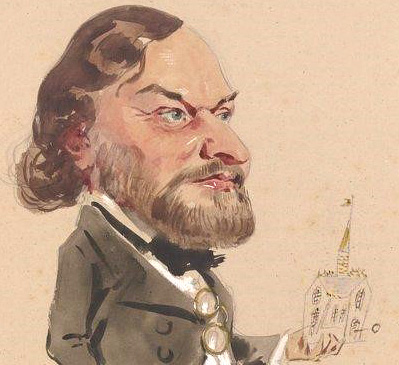Jean-Baptiste-Antoine Lassus (1807 – 1857), architect
1st image: Soirée; 2nd: bust (1857); 3rd: engraving (c.1855); 4rd: by Giraud (1853); Video: Sainte-Chapelle
In 2015, I identified architect Jean Lassus due to his distinctive facial features, particularly his fierce nose, and the presence of equally prominent architects such as Visconti09, Viollet-le-Duc40a, and Duban60, who often exclusively worked with Lassus as architect or as inspector.
Lassus shared the honor with Viollet-le-Duc for their restorations of the Notre Dame and Sainte-Chapelle. Despite that his name is not included in a recently discovered press article about Une Soirée au Louvre, I maintain Lassus, as best fit, for his vast contributions to French architecture, and in absence of any convincing evidence for another person at this position.
Lassus attended several vendredi-soirées of count de Nieuwerkerke16, including those on February 4, 1852, and February 6, 1853, as confirmed by Eugène Giraud's11 caricature. It includes a comical depiction of Lassus' Sainte-Chapelle with oversized spire (similar to Giraud's caricature of Viollet-le-Duc), with a large 'music box' key.
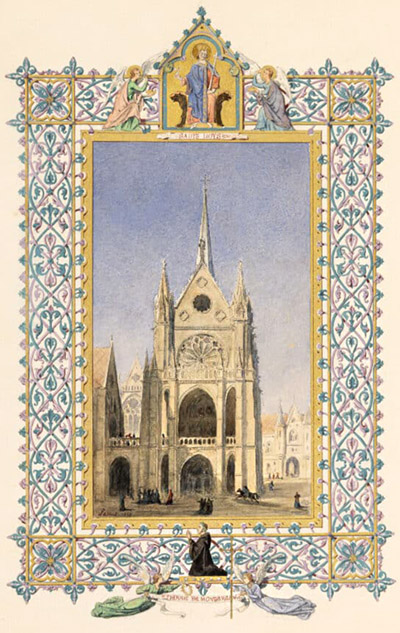
Due to Lassus’ premature death his immense value for French architecture is less acknowledged, as is visible in publications about Notre Dame, that have overlooked his name.
Based on extensive Second Empire documentation, I conclude that Lassus’ architectural impact equals those of his friends Viollet-le-Duc and Duban, and for sure merits his presence here.
Lassus received third prize in 1833 for his new design of the Tuileries Palace. Unlike the Prix de Rome for Duban, his neighbor in the painting, this did not grant him years of study in Italy. Instead, he focused on underappreciated late medieval churches such as in Amiens, Chartres, and Poitiers.
At a time when students ignored the Sainte-Chapelle in Paris, Lassus admired it, a sentiment shared by Victor Hugo. His second prize in 1835 for restoration designs for this church inspired further efforts, culminating in a gold medal in 1841 for his design for Napoleon’s tomb.
Lassus’ partnership with Viollet-le-Duc blended his Gothic expertise with Viollet’s knowledge of Romanesque architecture.
Beyond his renowned restorations, Lassus took on numerous ‘modern’ projects, including the church of Saint-Nicolas in Nantes (1843), the Sacré-Coeur in Moulins, and the neo-gothic church in Belle-Ville (1854).
Following Duban’s 1848 retirement, Lassus completed the Sainte-Chapelle restoration directing everything, from the "brilliant covering of the walls, to the elegant spire which crowns this gigantic shrine."
Lassus sought to recover from probable acute hepatitis by visiting Vichy, near his Saint-Saturnin project. Tragically, he died there at 50, leaving the architectural community, including his good friends Viel-Castel, Viollet-le-Duc, and Duban in shock.
